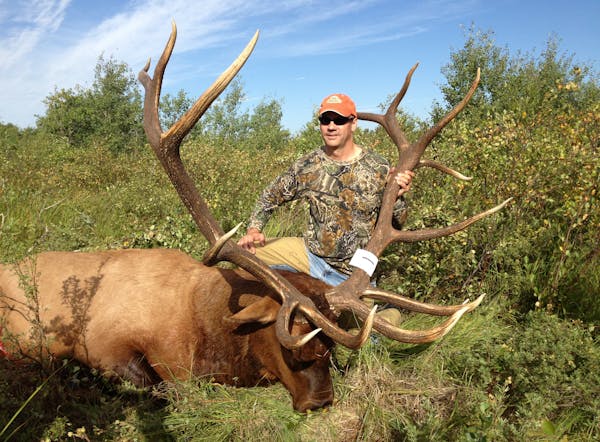Grouse hunters are wearing it in the woods now. Pheasant hunters will slip it on starting next weekend. And deer hunters will pull it out of closets next month.¶ Blaze-orange clothing has become ubiquitous during hunting season, and for good reason: It's the law, and it saves lives.
Nearly 14 people a year were killed in firearms-related hunting accidents in Minnesota between 1961 and 1970, and an average of 95 hunters per year were injured. But over the past decade, an average of two hunters per year have been killed and 23 have been injured in hunting accidents — a dramatic improvement, though one accident is one too many as far as hunters and hunter safety advocates are concerned.
Officials credit firearms safety education programs and the use of blaze-orange clothing as two major factors for safer hunting seasons.
"It's both," said Mike Hammer, Minnesota Department of Natural Resources education program coordinator. "The vast majority of hunters now have had hunter education, and blaze orange definitely comes into play, too."
If someone is accidentally shot now, it's usually because they are out of sight of the shooter or they accidentally shoot themselves. Of the 18 firearms accidents last year, 10 were self-inflicted wounds.
"When the eye sees blaze orange, you can't accidentally see a grouse or deer antler," said Ken Soring, DNR enforcement chief. "There is no game species that has blaze orange."
The requirement is recent. In 1986, the law required blaze orange or red be worn during the firearms deer season. Beginning in 1994, red was dropped and only blaze-orange clothing was legal during the firearms deer season. The law requires "the visible portion of the person's cap and outer clothing above the waist, excluding sleeves and gloves, is blaze orange."
It wasn't until 1996 that a law was passed requiring small-game hunters to wear "at least one article of clothing above the waist" that is blaze orange outside the deer season.
But curiously, while hunters can be cited and fined for failing to comply with the blaze orange law during the deer season, small-game hunters who are hunting without blaze orange outside the deer season cannot. In an apparent political compromise, legislators 17 years ago agreed to pass the blaze orange law for small-game hunters, but included no penalty for violating it.
Lawmakers apparently were concerned with forcing a major change on hunters that could make them lawbreakers.
Since it was enacted, conservation officers have only been able to issue warning tags or verbal warnings for violators. Last year, officers issued 59 written warnings.
"It's very unusual," Soring said. He doesn't know of another toothless law that conservation officers enforce.
"I believe the DNR and user groups were pushing it as the right thing to do for pheasant or grouse hunting," he said. "It clearly makes a difference."
Both Soring and Hammer said compliance has been good. Blaze-orange clothing is accepted by nearly all hunters, and the number of hunting accidents has dropped.
"The vast majority of people realize it's a good safety measure," Hammer said. "There's no inconvenience factor; blaze-orange clothing is readily available. It's nationally accepted that blaze orange has reduced the number of hunting accidents."
There has been no suggestion in recent years to add a financial penalty to the law.
"Accident rates are low and compliance is high," Hammer said. "Do we need to go change something if it's working? By and large, the blaze orange requirement is working."
Rep. Tom Hackbarth, R-Cedar, who sits on the environment and natural resources policy committee, was elected two years before the small-game blaze orange law was enacted.
"Everyone was OK with it as long as there was no penalty," he said. "As long as people are abiding by the law, I don't see any reason to impose a fine. I'm not in favor of making people criminals."
During the firearms deer season, of course, even small-game hunters must comply with the stricter blaze orange requirement. For specifics, see Page 31 of the hunting and trapping regs at www.startribune.com/a2502.
Doug Smith • doug.smith@startribune.com
Fitzgerald hits 2 home runs, Harrison strikes out 11 and Giants beat Rockies 11-4
Rooker hits 10th homer in July, Athletics secure winning month with 5-4 victory over Angels
Coughlin holds into CPKC Women's Open lead; Canadian star Henderson derailed by closing bogeys
![Leandro Goncalves celebrated Mr. Jagermeister win during Festival of Champions races at Canterbury Park Sunday September 1,2019 in Shakopee, MN.] Jerr](https://arc.stimg.co/startribunemedia/4Q7ZDLPTYGVMZ4XT4VAS4A342M.jpg?h=91&w=145&fit=crop&bg=999&crop=faces)
